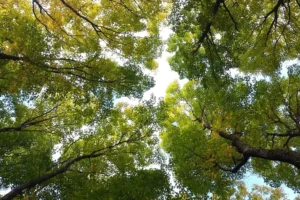
The consequences of global warming are so extreme that the Arctic region is moving to a new climate, one that is less marked by ice and snow and more open water and rain, scientists said Monday.
Sea ice in the Arctic has already deteriorated so much, they said, that even an exceptionally cold year would not produce as much ice as it was usual decades ago. Two other climate characteristics of the area, seasonal air temperatures and the number of days of rain rather than snow, are changing in the same manner, the researchers said.
In addition to declining sea ice, the Arctic is among the areas of the world most affected by climate change, with rapidly rising temperatures, thawing permafrost and other impacts.
“Everyone knows that the Arctic is shifting,” Dr Landrum, a climate scientist and the study’s lead author, said in the journal Nature Climate Change. “We were just trying to calculate whether this is a new environment.”
In other words, she said, “has the Arctic changed so much and so quickly that the current climate from the recent past can not be predicted?”
Using years of regional observational data and computer simulations, the researchers found that sea ice is already in a new environment, in effect: the extent of ice in recent years is generally smaller than that predicted for ice in the mid-20th century, even in the worst year.
Since satellite observations started in the late 1970s, Arctic sea ice has decreased by around 12 percent every decade, and the 13 lowest sea-ice years have all occurred since 2007. This year is predicted to be a record or near-record low for the ice level, which will be calculated when the summer melt cycle ends by the end of this month. The simulations of snow days showed that the transition to a new environment is taking place more slowly, with the change projected to be complete by the middle of the century.
Jennifer Kay, a climate scientist who was not involved in the research at the University of Colorado, said the current study is building on previous studies that looked at fewer climate elements.

But scientists have known for a long time that the area was undergoing profound changes. Dr Landrum said the changes are already impacting Arctic populations.
“The Arctic climate change isn’t there for them in the future,” she said.
Dr. Landrum said the climate simulations used in the analysis were simulating the future in an environment where planet-warming greenhouse gas emissions were already high.
“We still have a chance to change how quickly the Arctic is growing,” she said, “if we end up reducing our emissions.” If you work hard and make some improvements, there’s a possibility you ‘d see some drastic results.
The Thwaites and Pine Island glaciers are rivers of ice, steadily shifting ice from the West Antarctic Ice Sheet in the continent’s interior to the ocean, where it melts and contributes to the increase of sea level. In recent decades, the movement of the two glaciers has intensified, resulting in more ice loss from the interior, largely due to melting under the glaciers by warm water.
Even with the acceleration, however, complete melting of this part of the West Antarctic sheet could take centuries.The new study, published in Proceedings of the National Academy of Sciences, analyzed satellite imagery and found cracks and other signs of stress damage to the glaciers’ ice shelves, the leading edges that float on the water. This evidence of damage, the paper’s authors wrote, is the first sign of structural weakening of the ice shelves, a process that can end in the shelves’ disintegration and even faster glacial flow of ice to the ocean. The authors said that incorporating these damage processes into models of ice-sheet dynamics is critical for more accurate assessments of potential sea-level rise.
Source: www.nytimes.com

Carl Riedel is an experienced writer focused on using Open Source Intelligence (OSINT) to produce insightful articles. Passionate about free speech, he leverages OSINT to delve into public data, crafting stories that illuminate underreported issues, enriching public discourse with perspectives often overlooked by mainstream media.






